Enab Baladi’s Investigation Team
Dia Odeh – Murad Abdul Jalil
Before 2011, four hours or less would be enough for a traveler to move from Damascus to Aleppo, using buses, while such 350-kilometer journey would take about three hours by car.
Moving between the political and economic capitals of Syria and between the south and north, required crossing the M5 highway, which was closed after 2012 when opposition factions took control of villages along the road in Idlib countryside.
At the same time, many vital roads were disrupted in Syria, making inter-governorate movement difficult, often requiring crossing agricultural and feeder roads.
The damage was not limited to the movement of passengers, as it affected the movement of domestic and foreign trade and the transit of goods and raw materials in Syria, especially after the closure of most of the land border points, making Syria a closed map full of internal borders.
Nowadays, with the military advance of the regime’s forces on the ground, the issue of Syrian land roads emerges as a sovereign file through which international investment in Syria are introduced, in preparation for the “reconstruction” process that the Syrian regime wants to direct following its own perspective.
Land roads are taking greater interest than ever, with the regime’s allies rushing to be main contributors for the future reconstruction process, and starting to make plans and investment contracts in several local sectors.
Following this situation, the regime’s government announced last July a number of decisions to amend the classification of a group of roads in Syria, amid talks about pushing forward investment projects on the land roads having a significant economic impact.
This paper shall discuss the recent Syrian government’s decisions tackling land roads, the purpose behind them and the way they contribute to attracting reconstruction investments. It also highlights their structural reality and their importance at the local and foreign levels.
Paving ways to Syrian economy
The land roads’ network set rules for the investment game
The Syrian regime believes that no way shall be paved for foreign investment in Syria relying only on contracts and economic agreements unless it is established on the ground.
This can be considered as the basic rule to accomplish these agreements and contracts concluded with other countries, especially the main actors in the Syrian file, to manifest on the ground and start implementing their terms gradually.
In light of the economic deficit the regime is suffering, the government is taking steps and measures to attract foreign investment, which will tackle the tasks related to reconstruction and the implementation of strategic projects, regardless of the return.
The Syrian regime took steps such as talking about starting the rehabilitation of the land roads network on the ground, especially the main ones linking the Syrian governorates to each other, as well as local roads that the regime worked to reclassify them and turned 17 roads to central. These roads are part of a network extending between Aleppo, Tartus and Latakia, reaching the eastern countryside of Homs and the south.
The amendment of the classification occurred on August 10, 2019, in accordance with the provisions of Law 26 of 2006 on the classification and protection of public roads, and in response to the proposal of the Minister of Transport, Ali Hammoud. He previously announced the existence of a future plan for the implementation of leased land roads, upon which the government would impose a fee in order to secure the necessary income to maintain and improve the roads and go on with this process.
| Defining BOT
It is a system whereby public investment projects are financed, established, managed and maintained by the private sector, which may be one private company or several private companies, whether local or international. The company shall undertake the construction, implementation, management and maintenance of the project for a certain period of time, namely the concession period. This period enables the project executing company to recover the costs it has paid to implement the project, while achieving a satisfactory rate of profit. The project company then transfers the ownership of the project assets to the host country, being in good shape without limitation and condition. The parties to the BOT system are limited to two main parties, namely the host country and the company executing the project. Source: Arab Planning Institute |
In January 2019, Hammoud told the government newspaper Al-Baath that there will be road construction projects in the north, south and southwest axes. The projects will be invested following the BOT principle, which allows the investor company, once the road is completed and built, to benefit from operating revenues for a specific period, after which it shall be delivered to the state.
From rehabilitation to privatization
Modifying the classification of local roads into central ones is part of the rehabilitation processes referred to by the Syrian regime’s Ministry of Transport, which not only start with repairs and maintenance, but also extend to reach distant and fundamental objectives related to attracting investors and foreign companies.
This enables the regime to achieve two goals at the same time: The first is getting rid of the financial burden of the process, and the second is to obtain financial revenues and fees after the completion of the rehabilitation and establishing roads with new classifications.
Among the roads identified by the Ministry of Transport for classification modifications are: Athariya- Khanasir-Aleppo-Salamiyah-Al-Mukarram-Fokani-al-Farkhani, Furqlus, Node Khmeimim-Khmeimim Airport, Salkhad-Bakka – al-Muftarah Roundabout, Tartous – Baghmleikh – Wadi al-Oyoun.
The modifying road classification from local to central starts with three objectives. The economic analyst Younes al-Kareem has identified them during an interview with Enab Baladi.
The first goal, according to al-Kareem, is to raise the overall level of speed for cars, more than 90 kilometers per hour, which achieves the geography of the connection to other countries of the world; and thus access to warm water (Mediterranean).
Al-Kareem added that the second goal of the Syrian regime’s government is to map out the privatization of the road sector and impose taxes, both from the state and the private sector, on transit and users.
In addition, he explained that the Syrian regime wants the modification to attract foreign investment, especially since the Iranian and Russian sides are interested.
The Syrian regime’s tendency to privatize roads in Syria dates back to 2001, when the Syrian government signed a contract with Kuwait’s Kharafi Company to implement road construction projects, including the road linking the city of Jericho to the Idlib countryside with the coastal city of Latakia and Deir ez-Zor-Hasakah road.
The Kuwaiti newspaper al-Qabas published a report in May 2006 stating that the Kuwait Fund for Arab Economic Development contributed to the funding of the Jericho-Latakia road project, which aims to link the production areas in Syria to the export zones, through a 15 million Kuwaiti dinars loan offered by the Fund to the Syrian Government.
Why modifying road classification?
Rehabilitating the road in Syria for investment cannot be offered to foreign companies if the “local” status remains. Rather, its classification should be modified to centrally connect the governorates, said Syrian road engineer Abdul Jabbar Kayali.
“In case the road has a local character, it cannot be invested, as it must be commercial or connecting governorates to each other,” Kayali added, stressing that modifying road classification into central increases possibilities of international investment.
According to Kayali, the central roads differ from local roads in terms of vertical and horizontal curves, traffic signals and tolls, among other factors.
He indicated that the central roads need periodic maintenance, pointing out the great challenges to the work of the government of the Syrian regime in the event of rehabilitation, including the provision of liquid asphalt, which was previously produced by the refineries of Homs and Baniyas.
Kayali clarified that Damascus and its countryside rely mainly on just one asphalt plant, and the remaining need is obtained from old ponds around the refineries, and another part through importation, which is being hampered by US and EU sanctions.
According to Kayali, the rehabilitation of roads in Syria and the modification of the classification of roads from local to central require foreign companies to sign investment contracts with the regime to complete the projects.
Kayali’s opinion matches the opinion of economic analyst Younis al-Kareem about the Syrian regime’s objectives behind modifying the classification of roads from local to central, as both of them linked the matter to the regime’s attempt to attract foreign investments.
Partner in investments
According to the announcement of the Ministry of Transportation, the decision to centralize roads came “after studying the importance of vital linkages between different regions and towns across the country, the extent of increased traffic and cargo loads, and the percentages of economic, demographic and development needs.”
“These roads are expected to be included in the work plans of the General Organization for Road Maintenance and Transportation in the coming stage, especially the roads’ needs of structural layers, asphalt, warning signs, road paint and traffic safety tools,” the ministry said.
Economic analyst Younes al-Kareem argued that vital roads, especially in Aleppo and Latakia, are the subject of a struggle between Iran, Russia and China for investment contracts, in order to link the road network with ports on the Mediterranean.
Al-Kareem explained that the Syrian regime is aware of the geography of the region, and takes into account that Russia and Iran need a port on the Mediterranean, so the Syrian authorities turned to offer the possibility for privatization after the signing of agreements to lease ports and rehabilitate the railways.
According to al-Kareem, the revenues that the Syrian regime will receive from the operation are due to the redevelopment of the infrastructure. Since the Syrian regime’s government is incapable of carrying out this operation, so it is necessary to open the door to foreign investments.
The second advantage is the Syrian regime’s participation in part of the investments, and thus will be a future beneficiary from the fees that will be imposed on the passers-by. Besides, the third gain will be reviving the economy and recovering it from the collapse, especially in the agriculture and trade sectors.
Poll: Regime projects are propaganda for reconstruction
The roads rehabilitation file is part of a series of major projects announced by the Syrian regime’s government since late 2017, in conjunction with the military advances of al-Assad forces on the ground.
The regime’s government has presented major headlines for its projects, such as infrastructure rehabilitation, energy sector support, oil well operation, air and railway transportation projects.
Enab Baladi conducted a survey via its Facebook page to find out the opinion of its followers regarding such announcements, and whether it was the beginning of a series of plans to be implemented, or only to promote the Syrian regime’s victory on the ground in Syria.
81 percent of respondents believed that by announcing such projects, the Syrian regime seeks to spread propaganda to launch the reconstruction phase.
Only 19 percent of the 660 respondents thought that the projects in question will be implemented on the ground.
Most respondents supported the idea of “the regime propaganda for the reconstruction phase,” while some considered al-Assad is seeking to raise funds through the announced projects.
Bashar Abu Taym commented saying that these investments are in fact in the regime’s allies favor, i.e. Russia and Iran, and “will be realized at the expense of the Syrian people.”
Syria roads
Great economic value with insignificant infrastructure
Syria’s central roads network reached 8280.3 kilometers in 2018, up from 7074 kilometers in 2006, according to the Syrian Ministry of Transportation website.
According to Law 26 of 2006 (Law on Classification and Protection of Public Roads), the public roads in Syria are classified according to their supervising bodies and function into four categories.
The first category is the central highway network, which includes international roads linking Syria with neighboring countries, and the main roads linking the governorates’ centers majorly; in addition to roads of special interest and border roads with neighboring countries, as well as the service roads that serve international and central roads.
The second category is the local road network, which includes roads that connect the governorates’ centers with the centers of the cities and their areas, and the roads that connect the city centers with areas, districts and villages.
The third category comprises the agricultural roads and irrigation network, which are paved or covered with dirt, serving agricultural lands and water facilities. The fourth category includes the tourist roads network that serves touristic areas and archaeological sites.
The roads in Syria are characterized by a “weak structure in terms of construction due to irresponsible contractors, as well as to the lack of supervision and governance by specialized departments, and widespread administrative corruption,” according to a study on the transportation sector conducted by the Syria Working Group on Economic Recovery and Development, published in 2013.
The study confirmed that the roads in Syria are characterized by technical and engineering defects due to the fact that contractors used to deliver projects to their owners without examining the structure of the road and paving layers, and without ensuring that the conditions of construction are compatible with required specifications and international standards.
Irreversible value
During the years of war and the battles between the regime forces and factions over-controlling strategic cities, such as Aleppo, another type of conflicts came to be known as the “roads war.” Each side of the conflict tried to control strategic routes to expand its control.
Considering the importance of the road sector, the Syrian regime focused its attention more on controlling strategic roads, in addition to protecting and maintaining its grasp on seized areas, confirmed the Minister of Transport in the Syrian government, Ali Hammoud, in an interview with the Russian agency Sputnik, last November.
Hammoud said at the time that “the government’s vision was focused on the roads and its protection, maintenance and preservation, as the value of roads in Syria is two trillion Syrian Pounds and we cannot abandon this great value.”
Over the past two years, the regime forces have controlled most of Syria’s strategic international roads, such as the Damascus-Daraa highway, which links Syria to Jordan and the Gulf states.
However, the two main roads in Syria are still outside al-Assad’s control as they pass through Idlib, the opposition-controlled area. These are the Aleppo-Latakia M4 highway, 186 km long, and the 146-km Aleppo-Hama M5 highway, which is part of a 355-kilometer-long central road to Damascus. Head of the Syria Working Group on Economic Recovery and Development, Osama Kadi, confirmed to Enab Baladi that the two roads, which are important land arteries for the passage of goods and transit, present two routes linking the Syrian north to the south.
Material benefit to the regime
In addition to the regime’s military and political interest in controlling the M4 and M5 highways, both roads are of great economic significance, especially the Damascus-Aleppo road, which is a major artery linking the political capital (Damascus) and the southern region to the north and the economic capital, Aleppo.
The re-linking of the north to the south generates economic benefits for the Syrian regime’s government, in addition to a great benefit for the citizens, which lies in reducing the prices of food and goods because of the ease of their transport between Damascus and Aleppo, after they used to be transported through the “insecure” Ithriyah – Khanaser road that connects Aleppo with Hama and then Homs and Damascus.
The Minister of Transport in the government of the regime, Ali Hammoud, stressed in an interview with Sputnik the importance of the two roads, saying that “they are two of the most important roads that we need to return to good investment because of the economic importance of Aleppo and its role in the reconstruction process, and the importance of Latakia as a port and thus the transportation of goods from other countries for the reconstruction of Syria and Iraq.”
For their significant importance, the two roads were part of negotiations and agreements between the guarantor countries, Russia and Turkey, in the Sochi Agreement between Turkish President Recep Tayyip Erdoğan and his Russian counterpart, Vladimir Putin, in September last year.
According to Osama al-Qadi, the terms of the Russian-Turkish agreement included the restoration of transit traffic through the two roads by the end of 2018, but so far the two roads have not been opened. He considered that as “political message to enforce the implementation of the agreement, but its content is economic and sovereign for Russia and the Syrian regime.”
Land roads sector: Iranian interest and Russian preoccupation
While talking about the projects the Syrian regime is seeking to implement, it is impossible to overlook the role of Russia and Iran as the regime’s key allies that gained significant economic privileges in Syria, represented in long-term agreements in exchange for their support.
The Russians, who have concluded economic agreements in strategic sectors (oil, gas and wheat), did not seriously engage in investment in Syrian roads. The Minister of Transport, Ali Hammoud, said last November that the requirements for investment in roads are much lower than those of investment in other sectors. “Therefore, we are focusing with Russian friends on other various sectors,” Sputnik reported at the time.
However, according to al-Ba’ath newspaper, Hammoud stressed again on January on the existence of investment offers from Russian and Chinese companies to start the work of paid highway projects in Syria. Nevertheless, Russia’s interest in investing in roads is incomparable with its interest in strategic vital sectors.
Iran, which has signed economic agreements in vital sectors, such as electricity, phosphates and telecommunications, is more interested in the Syrian roads, as they are linked to the land road Iran is trying to open through Iraq and Syria to reach the Mediterranean sea and Lebanon, especially in light of meetings between the Iranian construction firm Khatam-al Anbiya and the Ministry of Transport in the regime’s government, to discuss the study of the establishment of a port in the far south of Tartus Governorate, near the Lebanese borders in al-Hamidiyah area.
Iran has supported the Syrian regime in recent years, and is awaiting the “grand prize,” as described by American news agency Associated Press, which would be the road that Tehran is trying to open from its territories to Syria, whether at the military or economic levels.
The road is supposed to pass through Iraq, which is currently holding talks with the Syrian regime for the opening of Iraqi-Syrian Border Crossing (al-Qa’im) in Deir ez-Zor, which is under the control of the Syrian regime forces and where Iranian militias are deployed.
According to Iranian Tasnim News Agency, a member of the Board of Directors of the Iranian Chamber of Commerce, Kiwan Kashf, stressed on July 7 that “the reopening of the Iraqi trade route linking Iran and Syria will provide opportunities for significant economic exchange between the two countries, especially in the field of exportation of building materials, such as ceramics and porcelain.”
Regarding the relationship of the 17 roads, which the regime has announced to turn from secondary to main roads, with the Iranian land road, the head of the Syrian Economic Task Force, Osama al-Qadi, told Enab Baladi that the Iranians “will seize any opportunity to use these roads to complete their projects inside Syria.”
Al-Qadi emphasized Iran’s tendency towards taking advantage of the three roads “Mier Shaker – Tartus route – Safita,” the road “Fattah Nassar – Ein Elkaram – Tartus,” and the road “Tartus – Baghmalek – Wadi al-‘Uyun.”
From China to the Mediterranean
Movements to pave the Silk Road
The talk about the establishment and improvement of new roads in Syria leads to the talk about the Silk Road, which is being promoted through official Syrian government media outlets on the one hand, and the pro-government media outlets on the other.
The Syrian media seeks to emphasize the importance of Syria in the old road, which used to pass through the city of Palmyra, in addition to the great media interest in Syria’s official participation in the One Belt, One Road conference, in the Chinese capital Beijing on April 25.
Bouthaina Shaaban, the political and media adviser to the President of the Syrian Regime Bashar al-Assad, stressed at the time that “the Silk Road cannot be really a Silk Road if it does not pass through Syria, Iraq and Iran, as Syria has an important position in this summit because it is an essential part in the historic Silk Road and its sacrifice and fight against terrorism are appreciated by the Chinese people and all peoples who believe in humanity, love and peace in the world. ”
What is the Silk Road?It is a group of interconnected sea and land roads, through which ships and caravans used to pass between China and Europe to trade silk, spices and perfumes. It is about 12,000 kilometers long, and starts from the commercial centers in northern China and then it is split into two branches: the first is the northern road through Eastern Europe and the Black Sea up to the southern Italian city of Venice. As for the southern road, it used to pass through Syria, Iraq and Turkey up to Egypt and the Mediterranean. Both roads used to feed Europe and Africa. Since 2013, China has been trying to revive this road, to deliver its goods in the easiest and fastest way possible to all continents of the world, through two land and sea roads. |
China’s strive to establish the road has been accompanied by a move by the Syrian regime’s government through strategic plans to establish a road with international specifications, according to the Syrian Minister of Transport. Hammoud stressed in a statement to the Russian news agency Sputnik in July 2018 that “the Ministry of Transport has developed a special vision and strategy for the establishment of international roads linking the regions of Syria, in line with the passage of the Silk Road through the Syrian territories.”
Hammoud talked about the introduction of two investment roads. The first is the highway linking the north and south, and extends from the Turkish borders up to the Jordanian borders, following the route “Bab al-Hawa (controlled by the opposition), Aleppo, Hama, Homs, Damascus, the Jordanian borders,” with a length of 432 kilometers, first-class, and with an estimated cost of 480 billion Syrian Pounds.
The second road connects eastern and western Syria and extends from Tartus through al-Tanf up to the Iraqi borders, following the route of “Tartus, Homs, al-Busayrah, al-Tanf, the Iraqi borders,” with a length of 351 kilometers, first-class, and with an estimated cost of 281 billion Syrian Pounds.
Engineer Osama al-Qadi doubted the assumption that the road, to which China has allocated $ 900 billion under the slogan “One Belt, One Road,” would be beneficial to Syria.
Al-Qadi expressed his fear that Syria will be out of the map of the Silk Road, because of the fighting, bombing and the absence of a political solution. He added that “the road is moving at a fast pace, and China will not wait until the achievement of security stability in Syria. It would rather bypass Syria by neutralizing it and replacing it with Turkish land transport lines.”
if you think the article contain wrong information or you have additional details Send Correction
النسخة العربية من المقال
-
Follow us :
Most viewed
- Why Damascus remains silent about Netanyahu's threats?
- Negotiations between SDF and Damascus: Agreement on generalities, disagreement on details
- Factors indicating a harsh Ramadan for Syrians
- Aleppo International Airport to resume operations next week
- With 18 points… National Dialogue Conference concludes its work












 The main gateway road in southwest Aleppo Salahuddin neighborhood - (Sputnik)
The main gateway road in southwest Aleppo Salahuddin neighborhood - (Sputnik)





 A
A
A
A
A
A
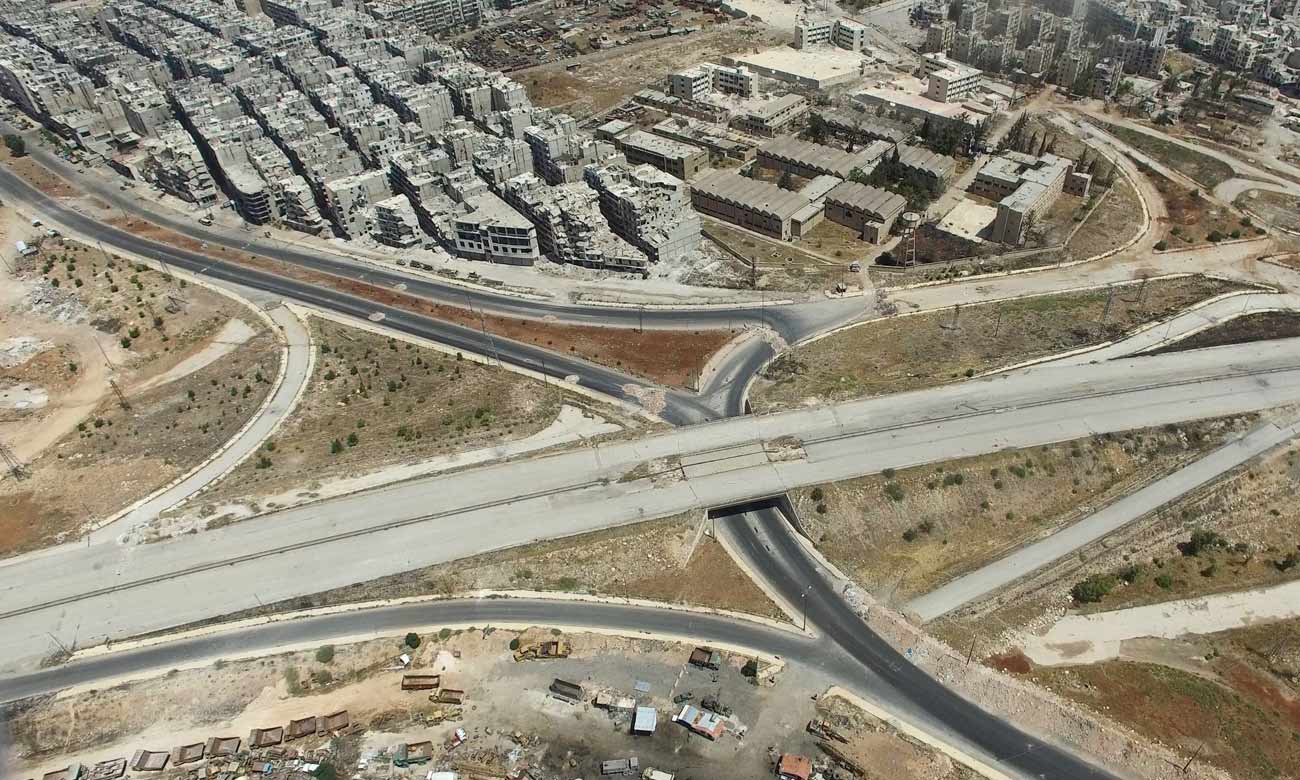

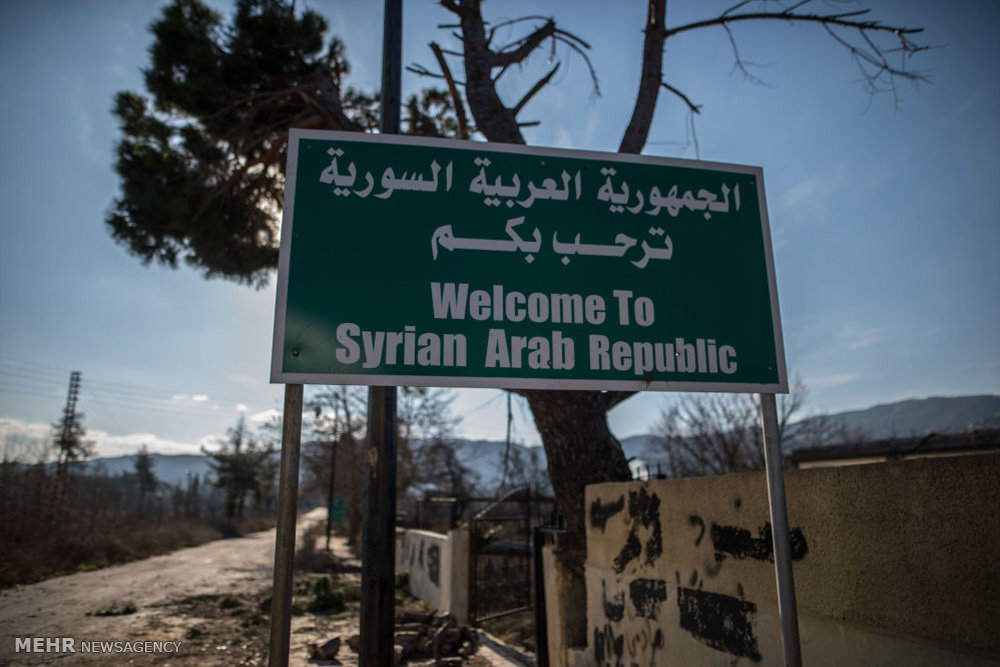
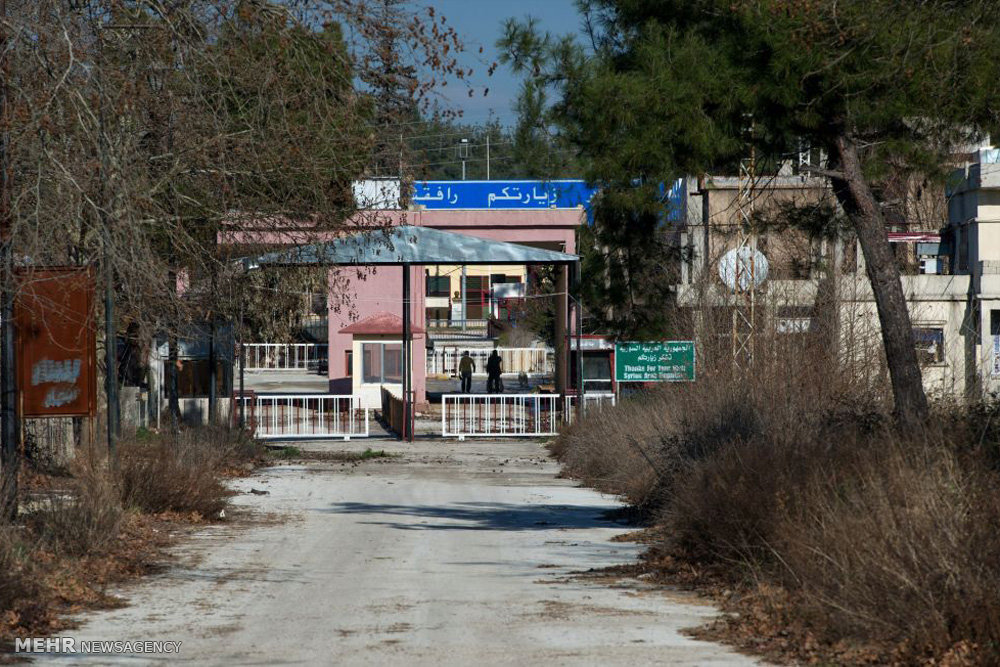




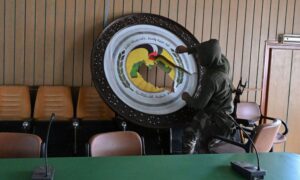
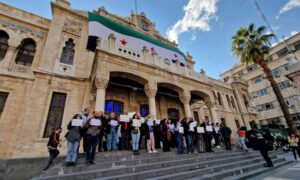
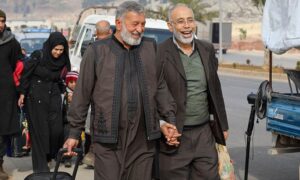


 More In-Depth
More In-Depth